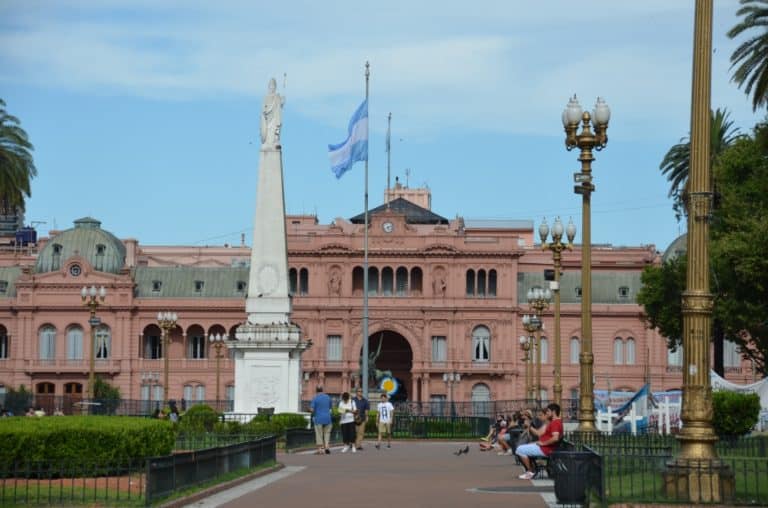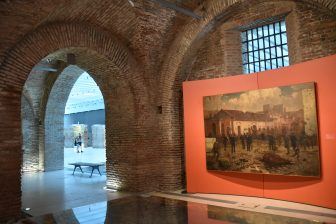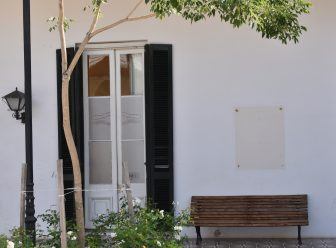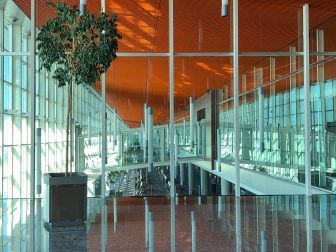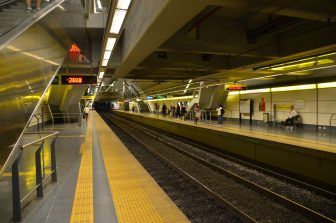Buenos Aires the capital of Argentina
The city of Buenos Aires the capital of Argentina is situated in the eastern part of the Rio de la Plata.
To the south and south east lies the Matanza Riachuelo River and the city’s remaining perimeter is the Avenida General Paz which is a road that stretches for 24 kilometres and provides the border with this region of the same name
Buenos Aires is the only autonomous city in Argentina which consists of 23 provinces in total.
The city grew out of the foundations of a Spanish outpost dating back to 1536 but only really became a city in 1580 when the Spanish conquistadores chose this as the base from which they could set out on their future expeditions to conquer the territory.
At that time, the number of inhabitants barely reached 500.
Today this bustling metropolis has a population of nearly 16 million.
The plan of the old city was constructed like a checkerboard consisting of squares measuring 129 metres which were separated by streets with a width of around 10 metres in the centre of which was the Plaza de Mayo where all the commercial and economic activity was initially developed.
Even today there are still various buildings that date from this period such as the Cathedral, which was founded in 1593 and subsequently rebuilt in the 18th century or the Cabildo, the former seat of government, which dates back to 1608 and which was also rebuilt between 1725 and 1765.
In the second half of the nineteenth century, the city of Buenos Aires swelled in a large semi-circle around the old city centre.
This was where the streets began which led to the roads that crossed the Pampas.
In 1776, the city became the capital of the viceroyalty of Rio de la Plata. Two years after this, with the greater commercial freedom that had been conceded by Spain, the port was enlarged proportionally with the increased flow of goods and merchandise, becoming one of the most important trading posts in South America.
Between 1806 and 1807, Buenos Aires came under attack by the British but on each occasion, the invaders were successfully driven out.
On the 9th July 1816, formal independence from Spain was granted.
At the end of the 19th century and at the beginning of the 20th century, as a result of opening up its borders, Argentina became the destination for thousands of immigrants from across Europe but most especially from Italy.
It is estimated today that around 25 million inhabitants in Argentina have some degree of Italian ancestry.
After the second half of the 20th century, the country fell victim to a period of serious political unrest which caused the Argentine people a significant loss of stability that had grave economic repercussions.
After the death of President Peron and the removal of his second wife by the military, following a coup d’état in 1976, the hounding and repression of former political opponents who subscribed to any left-wing ideologies began.
Thousands of people “disappeared” having been imprisoned by the government militias.
They were subsequently tortured and then simply vanished into thin air. These tragic victims are what have become known as “Los Desaparecidos” (the Disappeared) in Argentina.
It wasn’t until 1983 that democracy was restored.
At the beginning of the 2000’s, the Argentine economy, impacted by the world economic crisis, defaulted on its international debt repayment schedule which brought about a dramatic depreciation of the country’s currency and a significant rise in inflation.
The result of these combined factors was a virtual collapse of Argentina’s economy.
With the election of Nestor Kirchner in 2003, the country slowly started to recover, thanks to some skilful negotiations and fiscal reforms that were imposed in order to improve the nation’s financial situation.
This policy was relatively successful and as of today, Argentina is enjoying a period of economic buoyancy and political stability.
Buenos Aires has a wealth of monuments, museums and churches such as the Metropolitan Cathedral which dates back to the early 19th century or the Museum of Latin American Art of Buenos Aires where there is an important collection of art from across the region.
Also worth a visit is the National Museum of Fine Arts which is home to exhibitions of works by both Argentinian and European artists. On a slightly different tack, there is the Immigration Museum which shows the history and tells the story of the trials and tribulations that were endured by Argentina’s many immigrants.
Other sites of particular interest which shouldn’t be missed are:
La Casa Rosada (the Pink Palace), is one of the most spectacular buildings in Buenos Aires and is distinguishable from a distance by its unusual pink colour.
This is the seat of the President of the Republic.
The Barolo Palace in Buenos Aires which was completed in 1923, was commissioned by the impresario Luigi Barolo and designed by the Italian architect, Mario Palati.
When it was built, it was the tallest building in the city and remained so until 1935.
It is still considered to be one of the buildings of greatest national and historic importance in Argentina.
There is also the gigantic building of the Correo Central (the Central Post Office) which, due to its immense size, occupies an entire block.
In the famous Plaza de la Republica, the Obelisk of Buenos Aires was erected in March 1936 measuring 67.5 metres.
There is also an unusual sculpture that is worth admiring in the Plaza Naciones Unidas which is called the Floralis Generica.
This is an enormous metal flower which is 23 metres high and was built in 2002.
Visiting the city of Buenos Aires presents the tourist with an amazing array of choices when it comes to transportation.
There are, in fact, five different lines on the city’s underground system which cover a distance of up to 40 kilometres.
The first metro line was inaugurated in 1913 and it still uses the original carriages from that time so this has, in itself, become a tourist attraction.
Then there is an external line which is known as the Premetro that connects the south and north of the city.
The most commonly used mode of transport for the locals is the “Colectivo” which is a bus service that covers various points of the great metropolis with 180 lines that are operative 24 hours a day.
In order to reach the suburbs of Buenos Aires, there is a local train service that is generally used by commuters.
From the main bus terminal at the Retiro, buses depart for all the other main cities in Argentina and also offer routes that connect to Bolivia, Brazil, Chile, Paraguay and Uruguay.
There is a good taxi service as well as a service known as “Remis” which are cars that you can rent with a driver, but these do need to be booked in advance.
The main railway stations are: Estacion de la Constitucion, Estacion Once, Estacion Retiro, Estacion Federico Lacroze.
Travelling by sea is also popular with a variety of different well-developed options.
The cargo ships arrive and depart from Puerto Nuevo and the maritime terminal of Benito Quinquela Martin services the cruise ships and ferries that connect to other ports in South America.
The main airport for Buenos Aires is the Ministro Pistarini or Ezeiza Airport which is one of the largest in Latin America with connecting flights to all the world’s major cities.
It is just 37 kilometres from the city centre and can be reached either by taxi or via the bus company, Manuel Tienda Leon, which takes about 40 minutes.
Another alternative is the regular bus service on line 86 which does take about two hours.
The city’s second airport is the Aeroparque Metropolitano Jorge Newbery which is located just 4 kilometres from the centre and is principally used for internal domestic flights.
Buenos Aires has a sub-tropical climate.
The temperature in summer varies from a minimum of 18° up to a maximum of 30° whilst in winter, the temperature ranges from 7° to 17°. It rains on average on 100 days per annum, mainly between October and March with June typically being the driest month.
If you want to know what to do in Buenos Aires have a look at here
The Last Lunch and Museums
[ Apr.2018 ] Our last lunch in Buenos Aires in Argentina was at a restaurant called Prosciutto in Junin Street, the same street where the tango lesson studio was. The name suggests that this was an…
San Antonio de Areco, the Gaucho town
[ Mar.2018 ] The next day, we had an excursion to San Antonio de Areco from Buenos Aires in Argentina. This town is situated 113km northwest of Buenos Aires in the Pampas with the population…
Samba Danced by a Table
[ Mar.2018 ] The time passed quickly and it was already the 8th day of our stay in Buenos Aires in Argentina. We found a restaurant called “Miranda” and we felt we must try it…
Wine Tasting
[ Mar.2018 ] Our full city tour in Buenos Aires in Argentina finished in front of a restaurant called Freud & Fahler, which was near our hotel in Palermo. We said goodbye to Elisabet, our…
revisit Buenos Aires
[ Mar.2018 ] We decided to spend our Easter Holiday in Buenos Aires in Argentina. We have been there before, about two years ago, but that was a part of the grand tour visiting three…
used the underground train to go shopping
[ Mar.2018 ] It was Sunday on the third day of our stay in Buenos Aires in Argentina. For me, it was the shopping day I was looking forward to. Although many of the ordinary…

